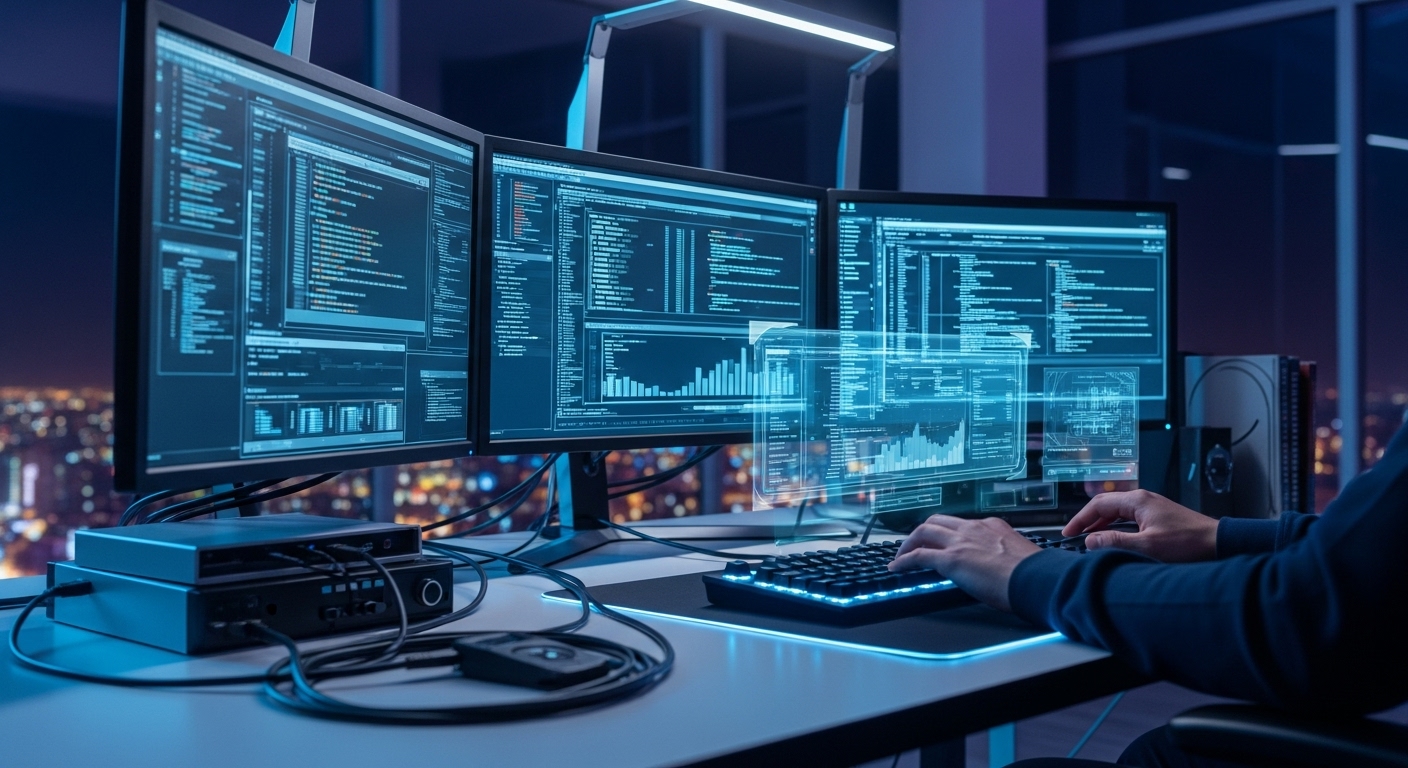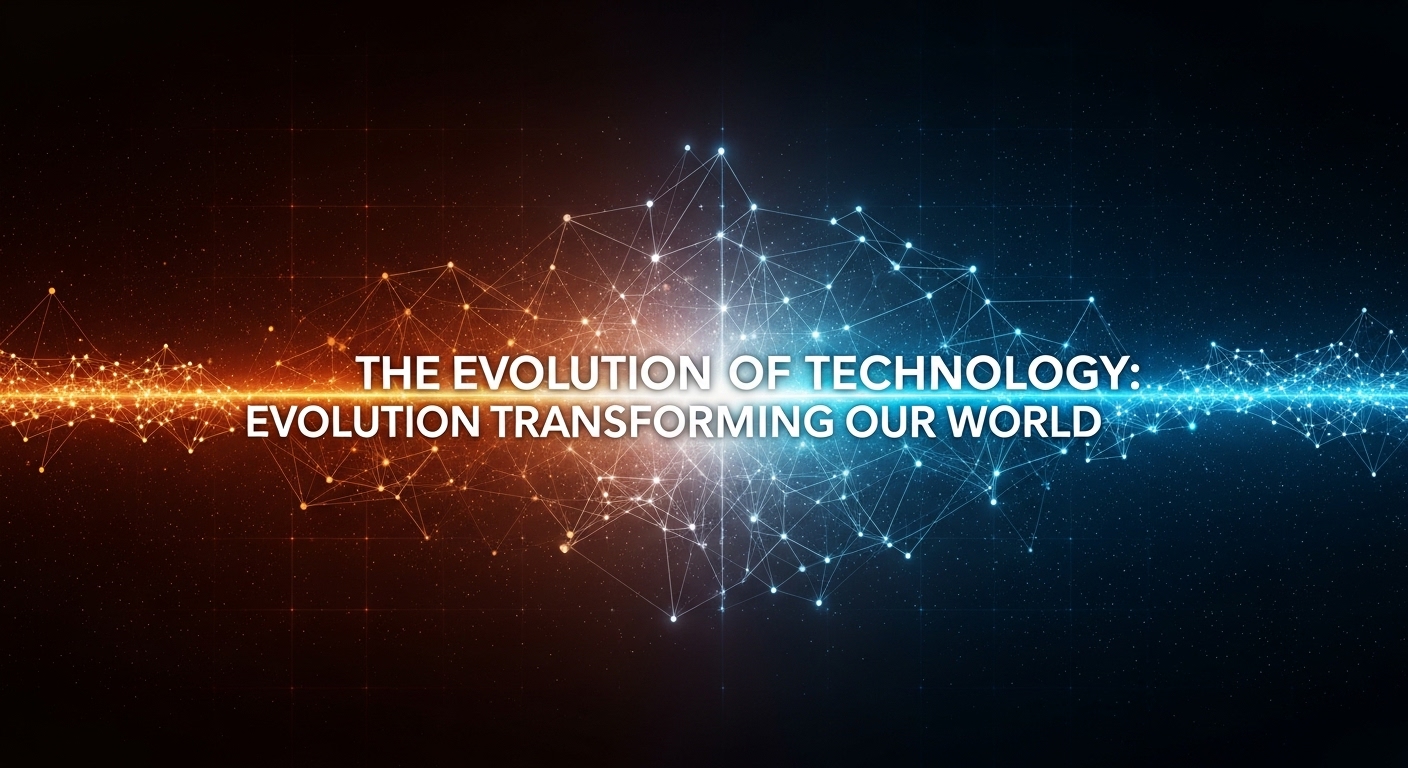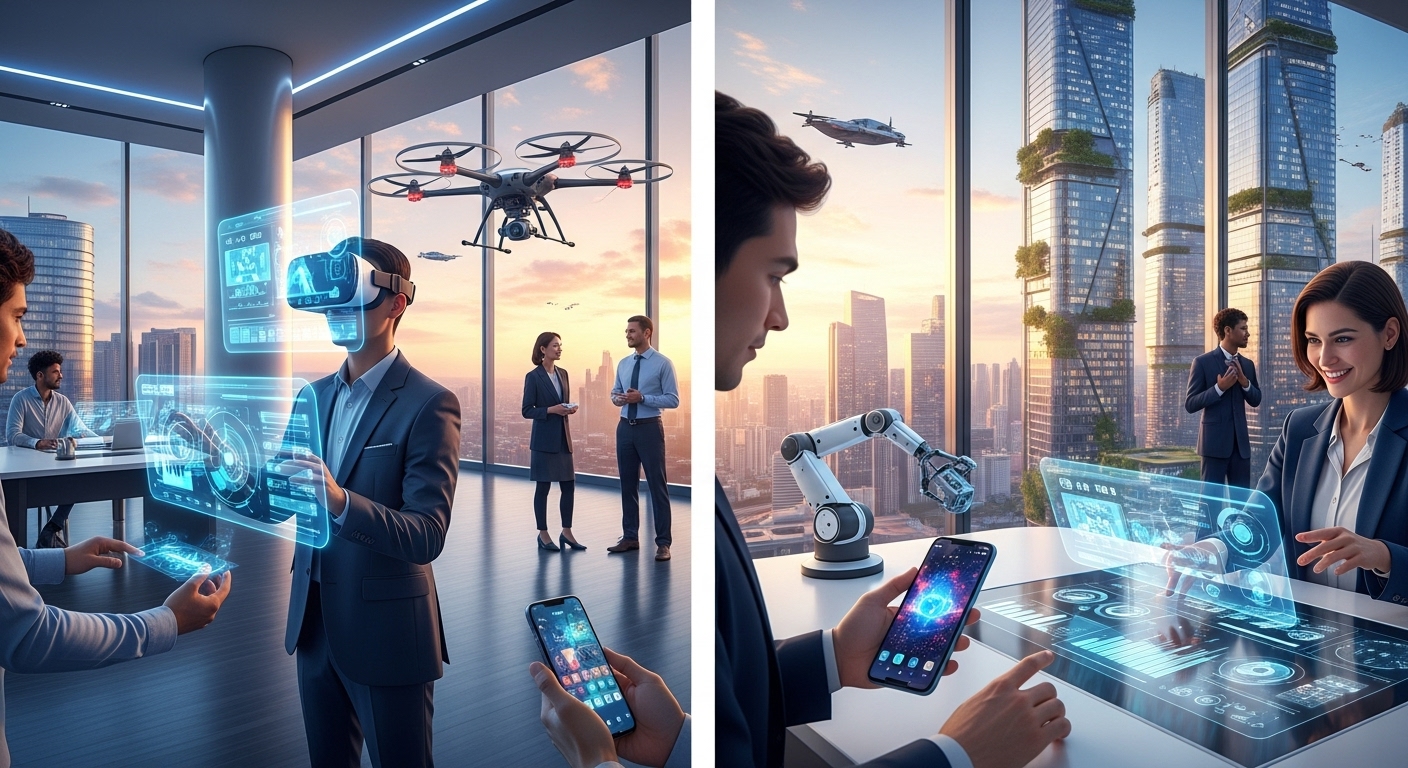Technology has become the defining force of our time. Every moment, from the instant someone wakes up to the time they go to sleep, technology shapes their experiences, decisions, and even emotions. It connects people across continents, drives industries forward, powers healthcare, enhances education, and influences entertainment. The digital revolution has not just changed how we live; it has redefined what it means to be human in an interconnected, data-driven world.
The story of technology is, at its core, the story of human creativity and curiosity. Every advancement, from the first wheel to artificial intelligence, reflects a desire to make life more efficient and more meaningful. As technology continues to evolve, it pushes the boundaries of possibility, constantly challenging what we believe we can achieve.
The Evolution of Technology
Human civilization has always depended on innovation. The early humans who created tools to hunt and farm sparked the beginning of technological thinking. As centuries passed, humans discovered new ways to shape metal, generate energy, and build machines. The industrial era changed everything — factories, engines, and machinery accelerated production and laid the foundation for modern society.
Then came the digital age, which transformed every aspect of life. The invention of the computer marked the beginning of an entirely new chapter. What began as a tool for calculations evolved into a global network of information and communication. The Internet connected billions, collapsing distance and time into mere seconds. This shift from analog to digital redefined industries, communication, and even culture.
The speed of innovation has only increased. Devices that once took up entire rooms now fit in pockets. Artificial intelligence is learning to mimic human thinking. Automation performs tasks faster and more precisely than ever before. The next wave of technological evolution will likely merge human intelligence with machine precision in ways that were unimaginable just decades ago.
Artificial Intelligence: The Brain of the Future
Artificial intelligence, or AI, stands at the forefront of modern technological progress. It represents not only a tool but a new form of intelligence capable of learning and adapting. AI systems analyze massive amounts of data, recognize patterns, and make predictions faster than any human mind could.
In industries like healthcare, AI diagnoses diseases from medical images more accurately than doctors. In finance, it predicts market behavior and detects fraud. In education, it personalizes learning experiences for students. Even in entertainment, AI is used to generate music, scripts, and digital art, blurring the line between human creativity and machine innovation.
Yet, as powerful as AI is, it also raises questions. What happens when machines become smarter than humans? How do we maintain ethical control over technology that can make independent decisions? These are questions that society must address as we move deeper into an era of intelligent automation.
The Internet of Everything
The Internet of Things, or IoT, has transformed how we interact with the physical world. Everyday objects are now connected through the Internet — from refrigerators that order groceries to watches that monitor heart rate and sleep patterns. This network of connected devices has created a smarter, more responsive environment that learns from human behavior.
In cities, IoT powers infrastructure. Traffic systems adjust automatically based on congestion. Streetlights conserve energy by turning on only when needed. Waste management systems monitor themselves. This is the foundation of what we call smart cities — urban environments driven by data and automation that improve quality of life while reducing waste and cost.
However, as everything becomes connected, security becomes a challenge. The more devices that collect data, the more vulnerable people become to breaches and surveillance. Balancing convenience with privacy remains one of the greatest challenges of the digital age.
Technology and Communication
Technology has revolutionized communication in ways that were once unimaginable. Letters that took days to deliver have been replaced by instant messages, video calls, and social media. People can now communicate across continents in real time, breaking down geographical barriers.
Social media has become a major part of global culture. It gives individuals the power to share their voices, opinions, and art with the world. Movements that once took years to organize can now gain momentum within hours. Yet, this new form of communication also comes with downsides. The spread of misinformation, loss of privacy, and constant connectivity can impact mental health and relationships.
Despite its challenges, digital communication has strengthened global unity. It allows for collaboration, learning, and innovation at an unprecedented scale. When used responsibly, it has the power to inspire, educate, and connect humanity like never before.
Technology and Education
Education is one of the areas most profoundly affected by technology. Once limited to classrooms and textbooks, learning has become a borderless experience. Online education, virtual classrooms, and digital libraries have made knowledge accessible to anyone with an Internet connection.
Students no longer depend solely on teachers for information. They can watch lectures, complete virtual simulations, and interact with peers from across the globe. Artificial intelligence tailors learning experiences to individual strengths and weaknesses, ensuring that no two students have the same path.
Technology has also empowered educators. With digital tools, teachers can analyze student performance, identify learning gaps, and adjust their methods. Education has become more interactive, inclusive, and dynamic. The future of learning will likely combine virtual and physical experiences to create environments where imagination and technology work together seamlessly.
The Role of Technology in Healthcare
The medical field has always benefited from technological progress, but recent decades have seen extraordinary transformations. Advanced imaging, robotic surgeries, wearable health monitors, and telemedicine have reshaped how doctors diagnose and treat patients.
Artificial intelligence assists in reading scans and identifying patterns that human eyes might miss. Robots perform delicate surgeries with incredible precision, reducing recovery times. Patients can monitor their own vital signs with smartwatches and fitness trackers, taking control of their health in real time.
The future of healthcare may include personalized treatments based on genetic information, 3D-printed organs, and nanotechnology that can detect diseases at a microscopic level. These innovations could extend lifespans and improve the quality of life worldwide.
Technology and Entertainment
Entertainment has always been tied to technology. From the first motion picture to virtual reality headsets, every innovation has changed how people experience art and storytelling. Today, streaming platforms, gaming consoles, and social media have made entertainment more accessible and interactive than ever before.
Virtual reality immerses users in new worlds, while augmented reality overlays digital experiences onto the real one. Artificial intelligence helps create realistic graphics, believable characters, and dynamic narratives in video games and films. The boundary between creator and audience is dissolving, allowing fans to engage directly in creative processes.
The entertainment industry continues to grow because technology fuels creativity. As tools become more advanced, artists can produce more ambitious works, and audiences can experience them in more immersive ways.
The Workplace Revolution
Technology has completely transformed the way people work. The traditional nine-to-five office job has evolved into flexible, remote, and hybrid models powered by digital tools. Video conferencing, project management software, and cloud computing have enabled teams to collaborate globally.
Automation handles repetitive tasks, allowing employees to focus on problem-solving and innovation. Artificial intelligence assists in analyzing data, improving decision-making, and predicting business trends. The concept of the digital workspace has made businesses more efficient, agile, and adaptive.
However, with automation also comes the fear of job displacement. As machines take over certain roles, workers must adapt by developing new skills. The future of work will rely heavily on human creativity, emotional intelligence, and adaptability — qualities that machines cannot replicate.
The Impact of Technology on the Environment
While technology has improved human life in countless ways, it has also contributed to environmental challenges. Industrialization, pollution, and electronic waste remain serious global concerns. However, innovation is also the key to solving these problems.
Green technology is driving the movement toward sustainability. Renewable energy sources like solar and wind are becoming more efficient and affordable. Electric vehicles are reducing dependency on fossil fuels. Smart grids are optimizing energy distribution and reducing waste.
In agriculture, precision farming uses drones and sensors to monitor crops, ensuring that resources like water and fertilizer are used efficiently. Technology has the potential to create a balance between progress and preservation, ensuring a sustainable future for the planet.
The Rise of Robotics
Robots are no longer confined to factories. They are now present in homes, hospitals, schools, and even space. Some robots assist with household chores, while others explore Mars. In healthcare, robotic systems perform surgeries with remarkable accuracy. In education, robots help children learn programming and problem-solving skills.
The use of robotics is expanding into creative fields as well. Artists and engineers collaborate with robots to design sculptures, compose music, and create films. These intelligent machines are becoming partners in innovation rather than just tools.
The fear that robots will replace humans is common, but in many industries, they are enhancing human abilities instead. The combination of human intuition and robotic precision can lead to incredible achievements.
Cybersecurity and the Digital World
As technology becomes more integrated into life, cybersecurity becomes essential. Every digital system, from banking to healthcare, relies on secure data storage and transmission. Hackers and cybercriminals constantly search for vulnerabilities, making cybersecurity one of the fastest-growing industries in the world.
Protecting data and maintaining trust in digital systems are vital for technological progress. Governments, companies, and individuals must work together to create safer online environments. Encryption, biometrics, and artificial intelligence are being used to defend against cyber threats.
However, cybersecurity is not just a technical challenge; it is also a human one. Education and awareness are key to ensuring that people use technology responsibly and protect their digital identities.
The Ethics of Technology
As powerful as technology is, it must be guided by ethics. Innovations such as AI surveillance, genetic modification, and autonomous weapons raise moral and philosophical questions. How much control should machines have? How do we ensure fairness, privacy, and equality in a world run by algorithms?
Technological ethics demand that innovation serves humanity rather than exploits it. Developers and policymakers must ensure transparency, accountability, and inclusivity in every system they build. The goal should be to create technology that empowers rather than divides.
The Future of Technology
The future of technology is a canvas waiting to be painted. Quantum computing, artificial general intelligence, space colonization, and biotechnology could reshape human existence entirely. The possibilities are endless, but they come with responsibility.
Imagine a world where humans can live on Mars, where diseases are eliminated through genetic editing, and where digital consciousness allows for new forms of existence. These ideas may sound like science fiction, but they are already being explored by scientists and innovators today.
The greatest challenge will be ensuring that technology remains a force for good — that it uplifts rather than isolates, that it creates opportunities rather than inequality. The true future of technology depends not only on machines but on the people who build and use them.
Conclusion
Technology has become the heartbeat of human progress. It is in the devices we hold, the systems that run our cities, and the dreams that drive our future. It connects, informs, entertains, and empowers us in ways no previous generation could have imagined.
But as much as technology defines humanity, humanity must also define technology. The tools we create reflect our values, ambitions, and fears. To build a better future, we must use innovation wisely — not only to make life easier but to make it more meaningful.
The story of technology is far from over. It continues to evolve with every discovery, every invention, and every idea. As we move forward, one thing remains certain: technology will continue to shape who we are, how we live, and what we can become. The next great revolution is already on the horizon, and it will once again change everything we know about the world and ourselves.



